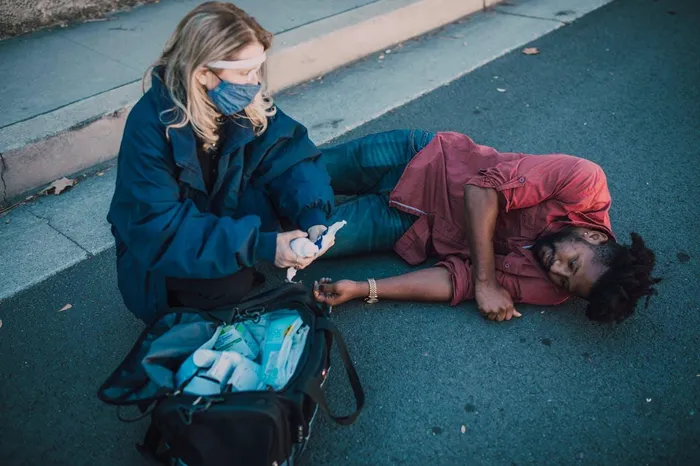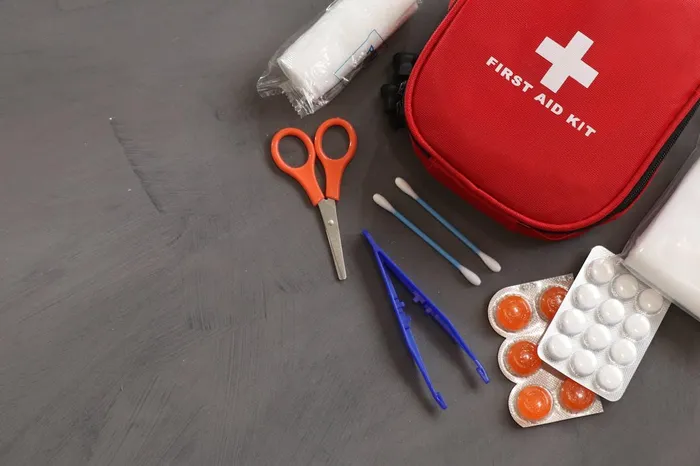Essential first aid skills everyone should know for life-saving preparedness

Cardiopulmonary resuscitation (CPR) transcends being merely a medical skill; it embodies a vital human skill.
Image: RDNE Stock project/Pexels
World First Aid Day, recently commemorated on September 13, was a reminder that our most powerful safety tool isn’t tucked away in a policy document or an app, but in our own hands.
In an emergency, the first few minutes matter most. A calm, competent response can be the difference between life and death.
Yet in South Africa, many of us are unprepared. Research shows that only about 20% of South Africans have CPR training (Resuscitation Council of Southern Africa).
Considering that heart disease is on the rise across the continent and with it, cases of sudden cardiac arrest outside of hospitals, this lack of readiness could cost lives.
The numbers are sobering: globally, nearly 500 000 cardiac arrests occur every year. Without cardiopulmonary resuscitation CPR, survival is slim. With it, survival rates double or even triple (American Heart Association). That means ordinary people, not just doctors and paramedics, hold the key to saving lives.
CPR is more than a medical skill. It’s a human skill. You use it when someone collapses, is unresponsive, and isn’t breathing normally. Immediate chest compressions keep blood and oxygen flowing to the brain and vital organs until help arrives.
The Red Cross explains that CPR is not just for healthcare workers: “When bystanders act quickly, survival rates rise dramatically.” Training only takes a couple of hours, but the impact can last a lifetime.
There are two types of CPR:
Hands-only CPR: This straightforward method involves chest compressions only, no rescue breaths, and takes just minutes to learn. In an emergency, call 112 (or 10177 in South Africa), ask someone to retrieve an AED if available, and start compressions.
Full CPR (with rescue breaths): While hands-only CPR is vital, learning full CPR gives you the confidence to handle a wider range of emergencies. This technique combines chest compressions with rescue breaths, making it especially critical for infants and children who are more likely to experience respiratory emergencies.

Stock your personal first aid kit with essentials like plasters, antiseptic wipes, gauze, burn gel, pain relief, a thermometer, and scissors. Keep these kits at home, in your car, and in your bag for easy access during emergencies.
Image: Roger Brown /pexels
The ABCs of First Aid: The skills everyone should know
Beyond CPR, five essential first aid skills can make anyone their own first responder. They’re simple, memorable, and life-saving.
Airway, Breathing, Circulation (ABC): Always check if the airway is clear, if the person is breathing, and if not, start CPR immediately.
Control severe bleeding
Uncontrolled bleeding is life-threatening, but with quick action, you can save a life. Apply firm, steady pressure to the wound using a clean cloth or bandage. If possible, elevate the injured area above the heart to slow blood flow.
Treat burns properly
Burn injuries are common, from kitchen mishaps to more severe accidents. For minor burns, run cool (not cold) water over the affected area for 10–20 minutes to reduce swelling and pain.
For severe burns:
- Avoid applying ointments or removing clothing stuck to the skin.
- Cover the burn with a clean, non-stick dressing and seek immediate medical attention.
Choking: The Heimlich Manoeuvre
Choking can escalate from panic to tragedy in seconds. The Heimlich manoeuvre is a simple yet lifesaving technique:
- For adults, stand behind the person, wrap your arms around their waist, and deliver quick, upward abdominal thrusts.
- For infants, alternate between back blows and chest compressions.
- Assemble a first aid kit.
- A well-stocked first aid kit is your personal safety toolkit. Essentials include:
- Plasters, antiseptic wipes, gauze, and bandages.
- Burn gel, pain relief (paracetamol or ibuprofen), and scissors.
- A thermometer and tweezers.
Keep kits in your home, car, and even your bag for quick access during emergencies.
South Africa’s Road Traffic Management Corporation reports consistently high road accident injuries and fatalities, many of which could be less severe if first aid were given immediately. Being trained doesn’t just prepare you; it protects others, too.
Preparedness is the real safety net.
“Safety isn’t just about having insurance as a financial safety net after an incident; it’s about being personally prepared to provide immediate, life-saving protection in an emergency," says Dipesh Radia, chief commercial officer at Momentum Insure.
Your knowledge could mean the difference between a tragedy and a second chance at life.
Related Topics: